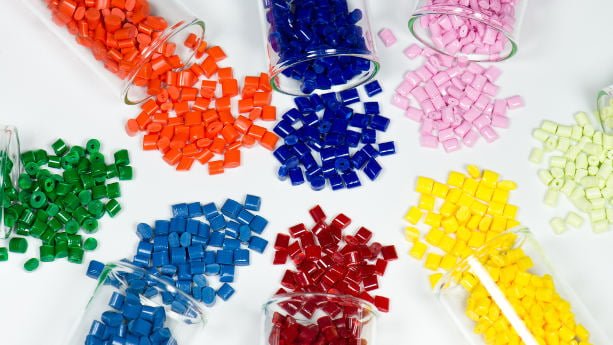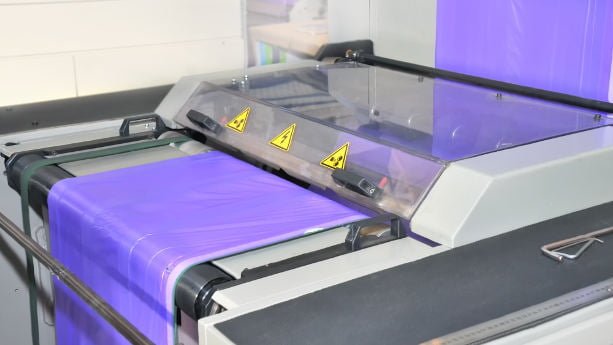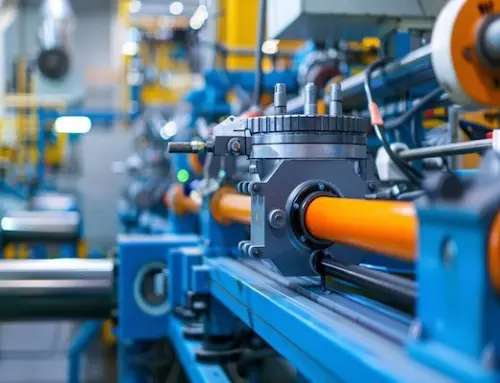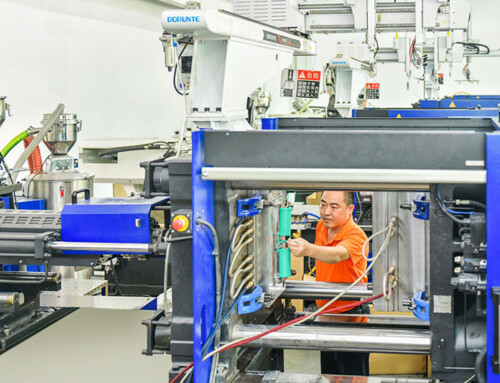Many products manufactured in China and other parts of Asia include plastic parts, which are made by melting in molds. However, not many buyers are familiar with this material and the related manufacturing process. Don’t rely on your suppliers to provide all the information about your products. This article will help you from design, development, production to quality control in all stages.
1. What are the types of thermoplastics?
Thermoplastics, or thermosoftened plastics, can be molded at high temperatures and can be recycled relatively easily.
The most common ones in China are acrylic acid (PMMA), acetal (POM), nylon (PA6.6), polycarbonate (PC), acrylonitrile (ABS), thermoplastic (PET), polypropylene (PP), low-density Polyethylene (LDPE), polyether ether ketone (PEEK), polystyrene (PS).
In contrast, thermoset plastics have an irreversible chemical structure. They provide higher heat resistance and structural integrity. They are completely different categories and require different treatments.
2. What are some typical applications of thermoplastics?
Here are some examples:
- The housings of many electrical and electronic products
- Many auto parts (for example PVC for the dashboard, ABS for the dashboard, PP for the bumper, PA for the camera, PS for the button…)
- Many building components (such as countertops, panels, pipes, railings, insulation materials, etc.)
- Much medical equipment (syringes, blood bags, test tubes, inhalers…)
- Toys (Lego, many Mattel figurines, etc.), baby products
- Plastic kitchen utensils
- Food packaging
- Gardening pot
- Storage box
- Drinking bottle
- Furniture
- Housewares and household appliances
For example, how do I know if I should use PE, PVC or other thermoplastics? Your product must be able to withstand a specific environment and need to have a specific visual quality.
Some of the most common criteria to consider are the following attributes:
- Abrasion resistance
- Melting temperature (Polyvinyl chloride 150 to 190°C, PTFE up to 400°C)
- UV resistance (good for PVC, while the mechanical stability of PE will decrease in sunlight)
- Transparency (for example, PS is transparent, PE is translucent, ABS is opaque)
- Shrinkage rate after molding (considered in CAD drawing)
- Food grade or non-food grade (PE, PP, PS, PC, PET, all available)
- Whether the flame level
- Hygroscopicity (Nylon has a large water absorption capacity, which affects mechanical properties and dimensional stability)
- The ability to resist impact, to be flexible, and to remain stable over time
- Price
You can also mix these materials, or in some cases add glass fibers to improve performance.
3. What types of tools can be used when manufacturing thermoplastic products?
Injection molding is a popular plastic manufacturing technique in China.
To simplify, this process includes:
- Dry polymer
- Heat and pressurize
- Push it into a hot mold
- Keep in the mold for a certain time under certain temperature and pressure
- Extrude it out of the mold
- Manually remove defects as needed
Extrusion
Another common process is extrusion. To simplify, this process includes:
- Dry polymer
- Add polymer to the extrusion hopper
- Melting polymer
The molten polymer is passed through a mold under pressure to produce the desired continuous product shape Extrusion is also a very popular thermoplastic molding process, and its output accounts for 36% of the total global plastic consumption (including films, sheets, rods, wire and pipe coatings, window frame profiles, etc.).
Other methods can be used, but they are less common. I’m mainly talking about injection molding here.
4. Is there any difference in mold cost?
Let’s just focus on injection molding. Sometimes the processing cost is US$2,000, and sometimes the cost is US$200,000. Why is there such a big difference? It depends on the following factors:
- The complexity of the parts, such as moving parts, inconvenient angles, different thicknesses…
- Part size-this directly affects the size of the tool and the amount of steel required
- The number of cavities in the tool-a single-cavity tool means that more cycles are required to manufacture a certain number of tools
- Degree of automation (automatic unloading saves operating time, but requires upfront cost)
- Metal hardness-from a few hundred rounds of aluminium to millions of rounds of H13 steel.
- Require surface finish
- Markups added by manufacturers and/or trading companies (molds are usually manufactured by professional manufacturers, sometimes by injection molding factories)
In addition to the cost, it usually takes about a month to make a mold. And adjustment can prolong this process. Don’t forget to add this to your schedule! We are seeing more and more customers request specific plastic pellet brands.
5. Can you guide suppliers to buy plastic materials from certain brands?
There is a real difference between unbranded locally sourced polymers and branded polymers from China (such as Chi Mei), Taiwan (such as Formosa), Germany (such as BASF, Bayer) and the United States (such as DuPont, Sabic) Quality difference.
Therefore, in many cases, customers are advised to do so. A common reason is performance and consistency considerations. Another reason is security. A friend of mine who works for a kitchenware factory told me last week that they use most of the polymers outside of China.
This is common for products that require contact with food or beverages. Either the factory is very complete and can be trusted to handle it, or the importer guides the supplier. If you are dealing with an ordinary Chinese factory, I strongly recommend guiding what polymer suppliers must be selected.
If you buy in large quantities, you can push your suppliers to share invoices and delivery notes to prove that they purchased the polymer from your source. Or you can find a wholesaler and work with them. (Your supplier may also buy from the same type of wholesaler—they rarely buy in sufficient quantities directly from the raw material manufacturer.)
If the quantity you purchase is very large, you can do business directly with the raw material manufacturer, and they will confirm that they have delivered a certain quantity to your supplier. That being said, if you buy a few hundred pieces at a lower price, it can be very difficult to convince the manufacturer to use your source.
This is a problem that small buyers may encounter. What you really, really don’t want is to have a mold, and then let the manufacturer switch from one polymer to another based on what they can “deal” with the supplier, consuming some old excess inventory, or other reasons.
The mold is made and tested for specific materials, and the flexibility of production is very small. Conversion materials and even brands can affect the size, finish, and mechanical properties of parts.
In addition to indicating the source of the polymer, you may also need to specify your tolerance (or lack of tolerance) when it comes to the content of recycled particles (called regrind). This can be tested on molded parts to a certain extent.
6. Do Chinese factories have access to high-end plastic materials from brands in Europe, the USA, and Japan?
Absolute. There is a high probability of this happening. The country most likely produces plastic parts is China. Each major raw material manufacturer has a sales team responsible for dealing with Chinese customers and local wholesalers.
For example, if you need high-quality nylon P6.6, you can contact INVISTA’s sales team or find one of their authorized distributors. They are an American company. I remember seeing INVISTA’s booth at a trade show in Hong Kong, so they did not hide. Say I want to use Grilon bz3 in particular.
7. How can I verify that they actually purchased GRILON bz3 to make my product?
You can ask your supplier to share invoices and delivery notes with you. You can directly contact the material supplier and ask the best way to confirm whether their product is being used. It is in their interest to help you do this.
Chemical analysis in the laboratory is usually an option because each brand of the polymer has its own specific formula, and the analysis results should match the technical data sheet provided by the raw material supplier. In some cases, you can burn plastic and compare the observed behaviour with “real” plastic.
8. Apart from Mainland China, can I find a supplier of plastic products in other parts of Asia?
Thailand is a good alternative source. If you find that a supplier preparing to export does not have all the reservations, Vietnam can also be an option. This is a challenge in 2019 because Trump imposes tariffs on China. If you are prepared to pay higher prices, you will find good resources in Taiwan, South Korea and Japan.
9. When it comes to thermoplastic products, are there any typical quality issues that require the buyer’s attention?
First, problems can arise due to the use of low-quality polymers (wrong type of plastic, a high proportion of recycled materials…) and insufficient preparation (for example, insufficient drying may cause cracks).
Second, there are quality problems in the injection molding process: dents, voids, very obvious welding lines, very obvious flow lines, warping, short lenses, burn marks, flashes, etc. We will show some examples in this article.
Third, these parts are often further processed. They may be processed, they are often assembled, and so on. In the post-processing stage, many things can go wrong.





Leave A Comment